Amy Bilquist Changing Up Workouts and Perception of Beauty in Athletic Bodies
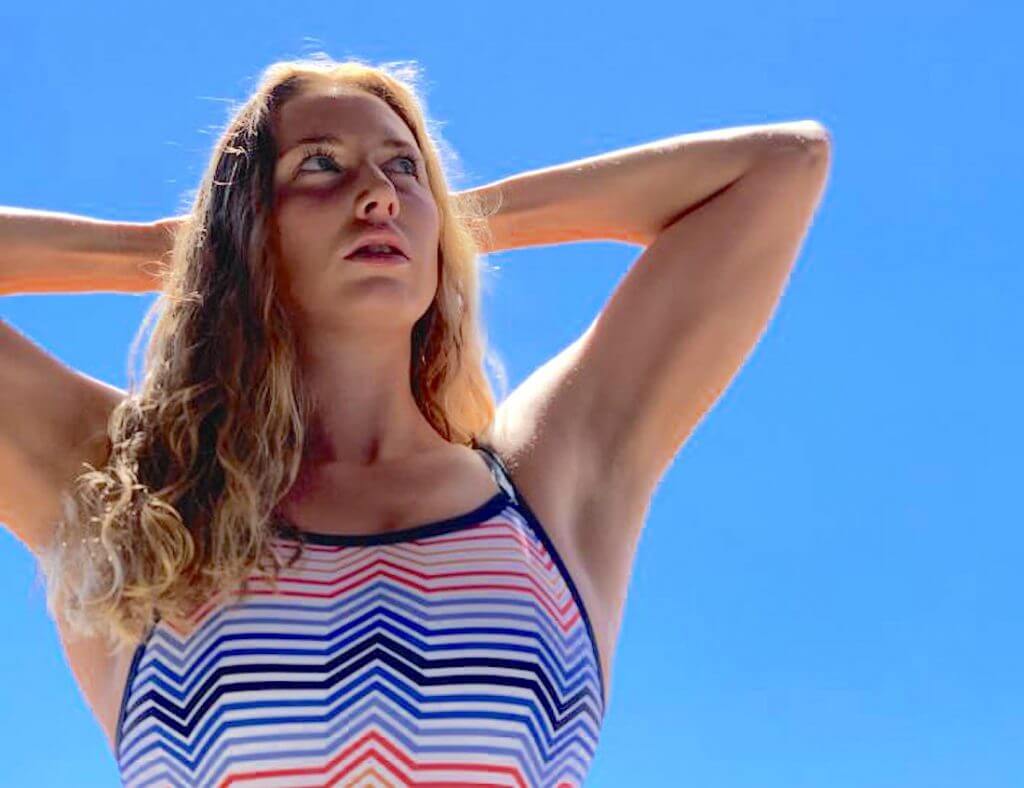
Amy Bilquist isn’t afraid to try something new — a new exercise or new training sequence.
She isn’t afraid to show everyone, either.
As the U.S. national champion trains for the 2021 Olympics, the COVID-19 pandemic has forced her to try new things out of the water. Sometimes that involves her twisting, stretching or contorting her long, elegant body into positions that leave her body vulnerable.
But instead of hiding those exercises, she is showcasing them on social media, posting pictures of her adventures in the weight room and the great outdoors, where she has been forced to do most of her training during the pandemic.
It takes a great deal of self-confidence to embrace allowing your body to be on display in a strong way, not worrying about what your face looks like or what parts of your body might look different.
Bilquist hasn’t always had that incredible self-confidence, but it has become a huge part of her persona on social media, as she tries to help build the idea that an extremely athletic body is an extremely beautiful body.
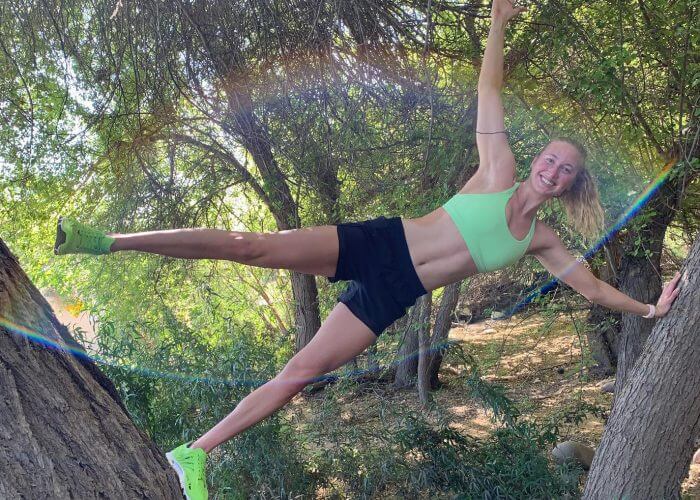
Photo Courtesy: Amy Bilquist
That is not always what society tells us.
“As I have grown, I have become more accepting and confident of my athletic body. I feel much more confident posting a photo of myself working out than a selfie,” Amy Bilquist told Swimming World. “I feel more comfortable with that because I have come to accept that my strength and athletic ability is beautiful, and it has opened a lot of doors and helped me get to a lot of places.
“It is a tug-of-war sometimes because I can get all fancy and put on makeup and do a selfie, but I feel much more inclined to post a picture of myself doing something athletic.”
Bilquist has posted several of those pictures during the pandemic. She has done everything she can to keep things fresh, especially when she wasn’t in the water.
“For me as an athlete, I am always someone who likes to try something new and keep mixing everything up. I don’t like getting in the rut of the same exercises,” she said. “In the weight room specifically with J.R. (Rosania), I got back in when I was able to train with him again. I wanted to do new things and work other parts of my body to become a well-rounded athlete again.”
Bilquist has struggled with injuries, battling a broken hand last year — overcoming that to win the national title in the 100 backstroke — then having a knee surgery early in 2020.
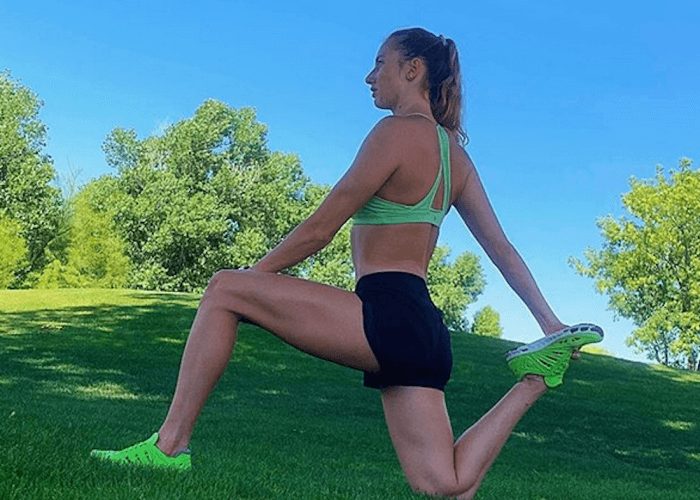
Photo Courtesy: Amy Bilquist
“Before my knee surgery, we put a great deal of strength training on adding muscle and getting bigger. I think that I didn’t need to put that much muscle on. I do better as an athlete when I am more athletic and able to do more explosive stuff and always keeping my muscles guessing on what is going to happen in the weight room,” she said. “That is how we approached it. We wanted to build up my athletic ability and maintain the strength, I didn’t want to lose that. But I don’t think I need to be getting absolutely huge, because I can feel that negatively affecting my stroke in certain ways.
“If you look at my relay splits or sprints at Cal, it is really my athletic ability getting me there in the field. I need to utilize that aspect of my ability.
“At first I was a little paranoid about it because I didn’t want to get weak. I wanted to maintain the strength. But it was also positive because every day it is something new. I feel like we are not training for anything specific right now so I am really trying to tune in to what my body is telling me. I can tweak my technique, then feel what I need to focus on in the weight room to build that up.”
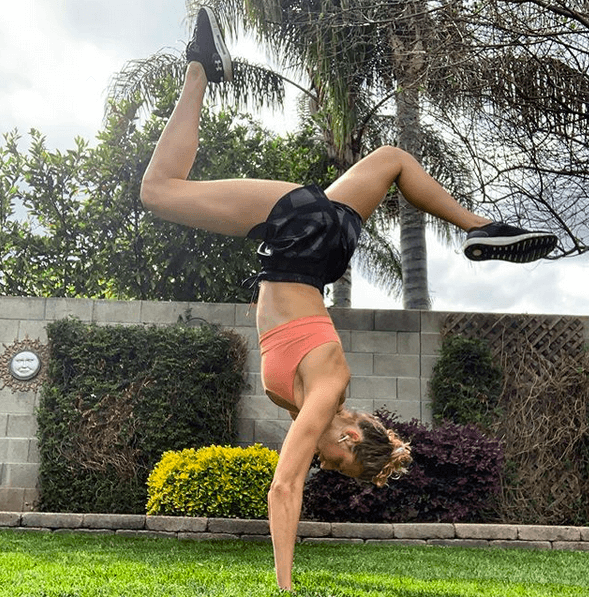
Photo Courtesy: Amy Bilquist
Then she will post it, along with other exercises she was doing outdoors.
“During the time I was out of the water, I was also out of the gym, so out of weights, so I was really happy to do different thing to keep my muscles fresh and not lose any strength. I was really trying not to lose strength around my knee because I had just built that up,” she said. “I was doing a lot of different things. My mom was with me for some of it and we would go on a walk/run and then we would see a tree and she would tell me to plank in the tree or do 10 squats here — anything to keep it interesting.”
Sometimes, it was too interesting.
“The most entertaining thing I did was, early on, I went on a run and Instagram Live’d it. It was hilarious because I was running and talking and saying ‘I do not run. This is a joke. I am sorry for anyone watching.’ And Beata Nelson was on there and she was dying (laughing). Swimmers could relate,” she said. “My body has enough issues. I can barely swim let alone run. I was doing a lot of yoga in our backyard and trying to do handstand holds for my shoulder, and a lot of different things. I was trying to get into things I wouldn’t do if I was swimming.”
She posted just about everything.
“For me, the decision to post some of those things is a lot of us were in the same boat and didn’t know what the heck to do. Let’s show each other what we are doing. If I am working on a handstand hold, that doesn’t need to be a secret, so lets show the strength this can build and the strength it takes to do this. It was awesome to see what other people were doing and I wanted to try a lot of it, so I felt like maybe people would feel the same way seeing what I was doing and want to try that. It is a way to share ideas and feel connected to the swim community. That was really excited because we are all in this together.”
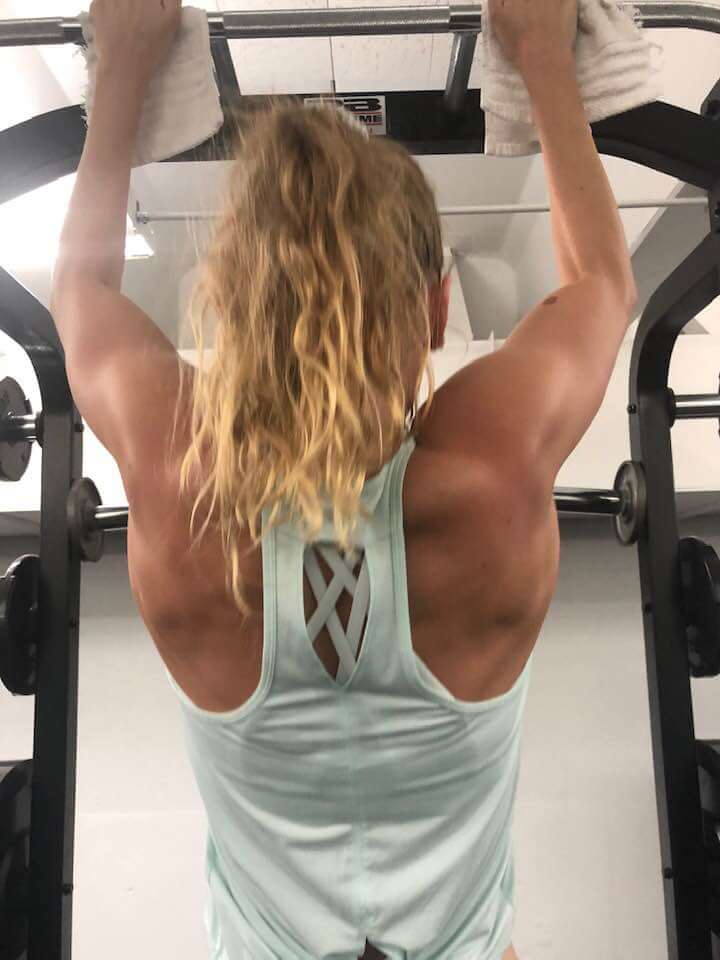
Photo Courtesy: JR Rosania
It isn’t always easy.
“Of course, there are some athletic poses where you could be working out but your stomach is out funny or you look funny. For me those are harder to post, but those are what you need to post a little more,” she said. “When we are doing athletic things, the strength is beautiful, but you are moving your body in such interesting ways to get through the movement, I think that for me, I have really become comfortable and confident in what my body can do for me — and being able to take a minute and photograph that and be able to reflect on that, I love that. I love looking back on those.”
Those poses also allow Bilquist to look back on her career and how she has grown up within the sport of swimming.
Five years ago, Bilquist arrived at Cal a 6-foot-3, slender backstroker, afraid to get too strong because it didn’t match her long, elegant frame. But, with the help of coach Teri McKeever, she started to fight that stereotype and fight society’s view on strength vs. femininity.
“I used to hate muscles. I used to hate anything athletic. Growing up, you feel like girls don’t do that. Girls don’t have muscles. Girls aren’t competitive. Girls want to be skinny, all this stuff,” she said. “Now, I have muscles and I have grown to embrace them and love them. I am definitely not confident with everything in my body, but being able to post and feel confident about it can help other people.”
Bilquist hopes the message is getting out to younger female athletes. The double standard for genders is something she is hoping to break down.
“As a society, we are slowly creeping forward. A male body in the athletic lens is way more mainstream, but you are seeing a lot more females putting on muscle and posting about it,” she said.
But that can be slightly misleading as well, since many fitness models on social media are building muscles where they want to, not necessarily to benefit them in a competitive sport.
“It is interesting because you get in this weird position. You see some girls look super fit and look really healthy, but they are doing exercises to bulk certain areas and slim others. It is almost emphasizing the old female vision of tiny waist, big butt, big hips, big breasts, now just putting muscle on that, instead of just having a more natural figure,” Amy Bilquist said. “You get into murky water with athletes because every sport has its own stereotypical body type. As a professional athlete, I know I am fit and my body is helping me be a professional athlete, but sometimes, I don’t feel as fit as that Instagram fitness model. But that is out of context because if I looked like that, I probably wouldn’t swim as fast.
“I think the people who are being promoted are the ‘Instagram fitness models’ and we need more showcase of professional athletes and what they do and look like. You don’t see WNBA players on the covers of things. I think there is more room for women to be accepted who have the muscles and who are professional athletes. We aren’t there yet.”
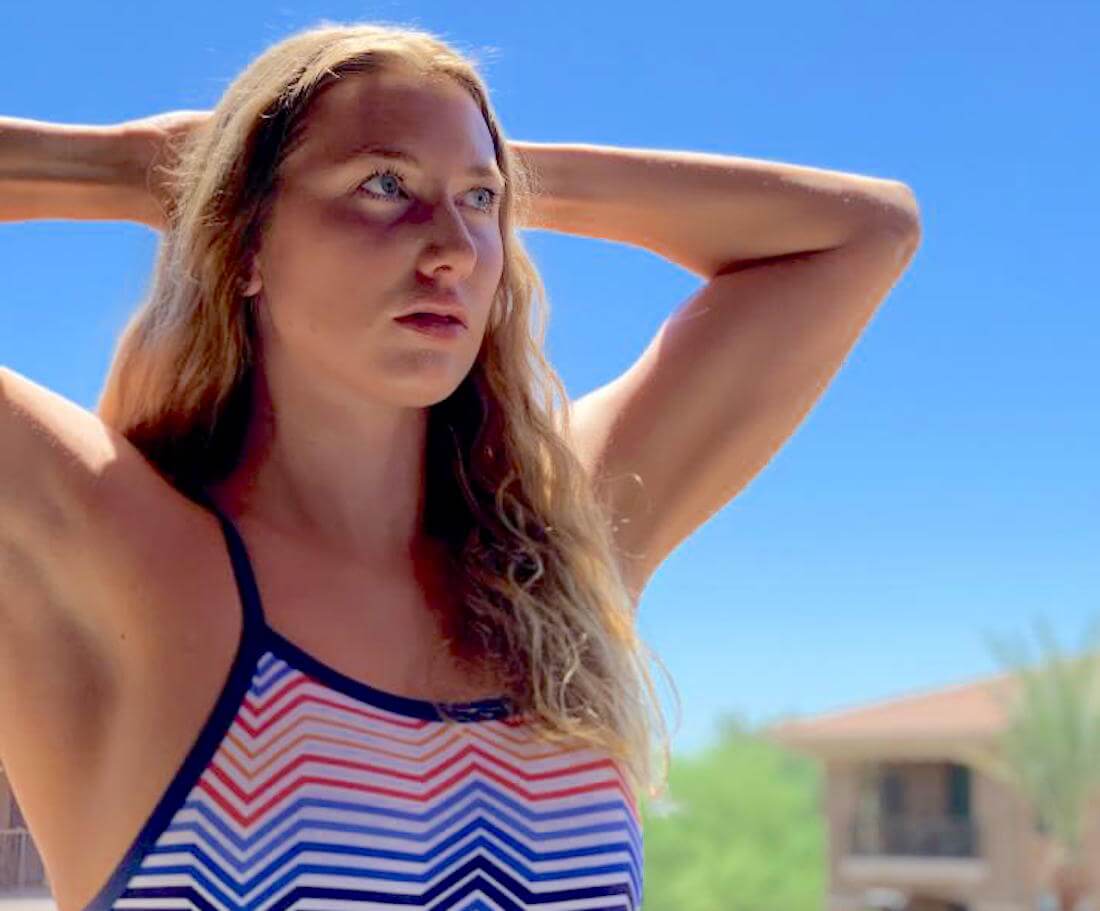
Photo Courtesy: Amy Bilquist



